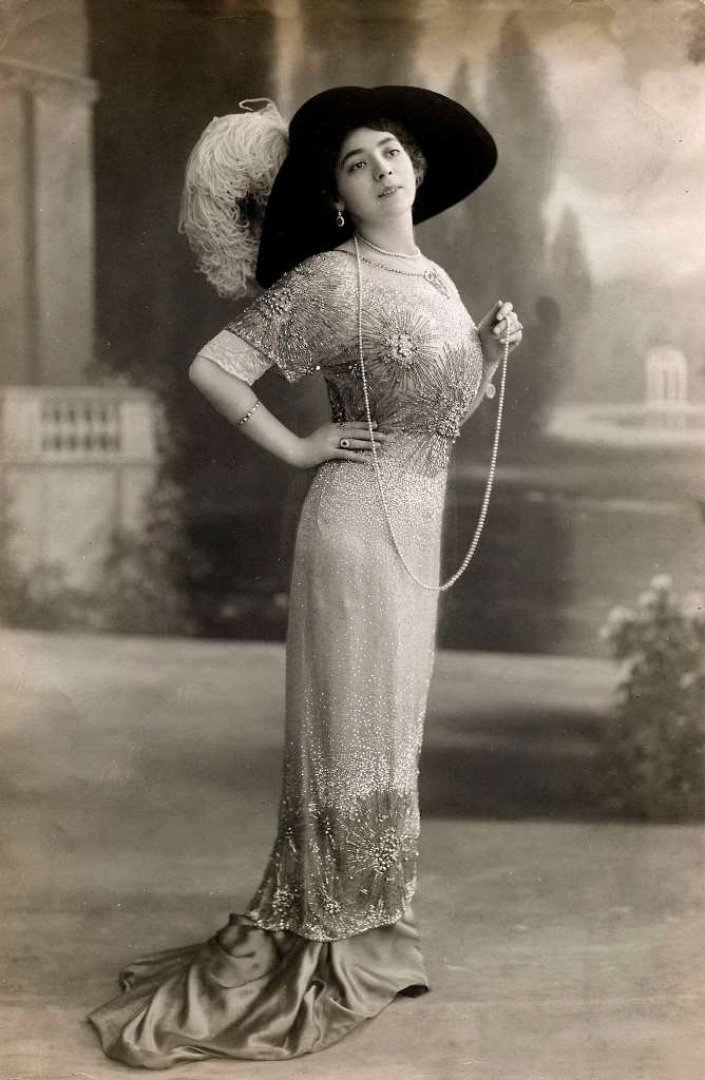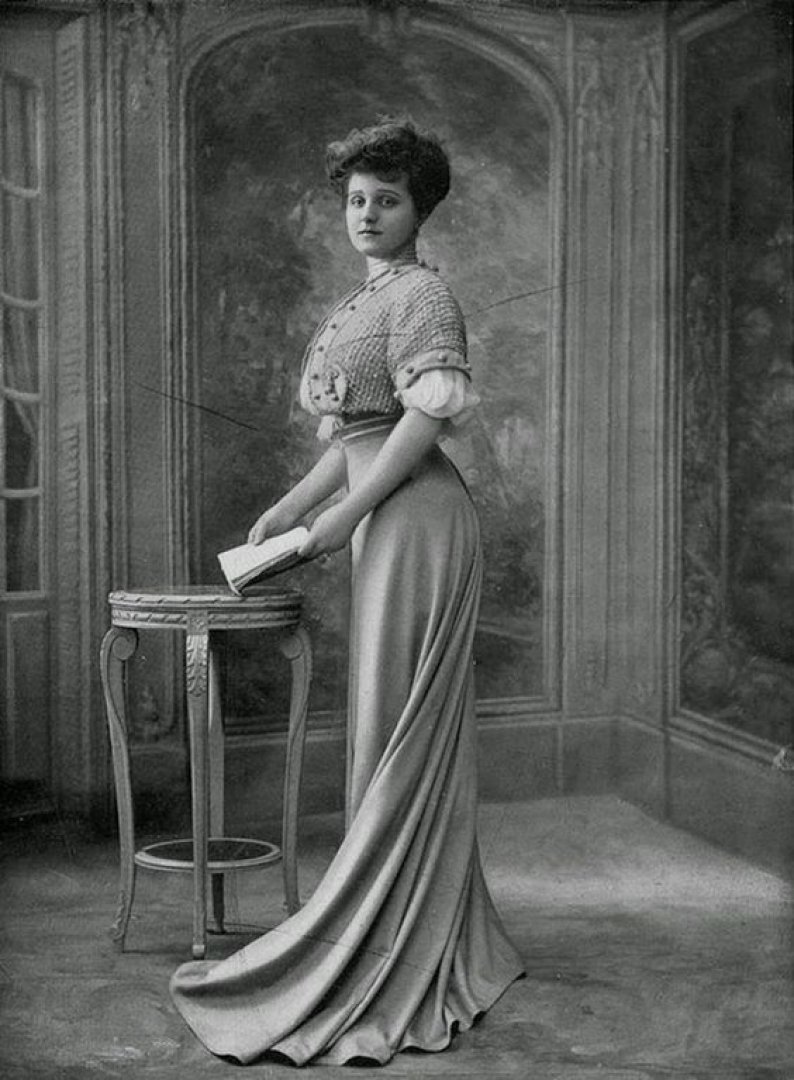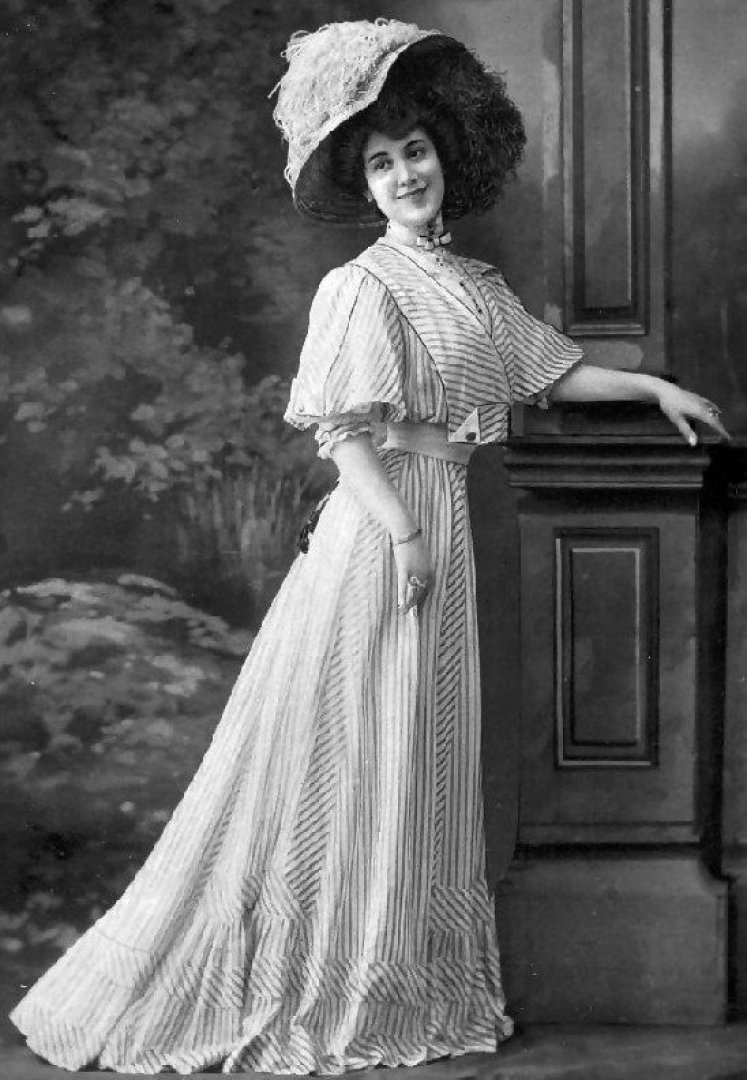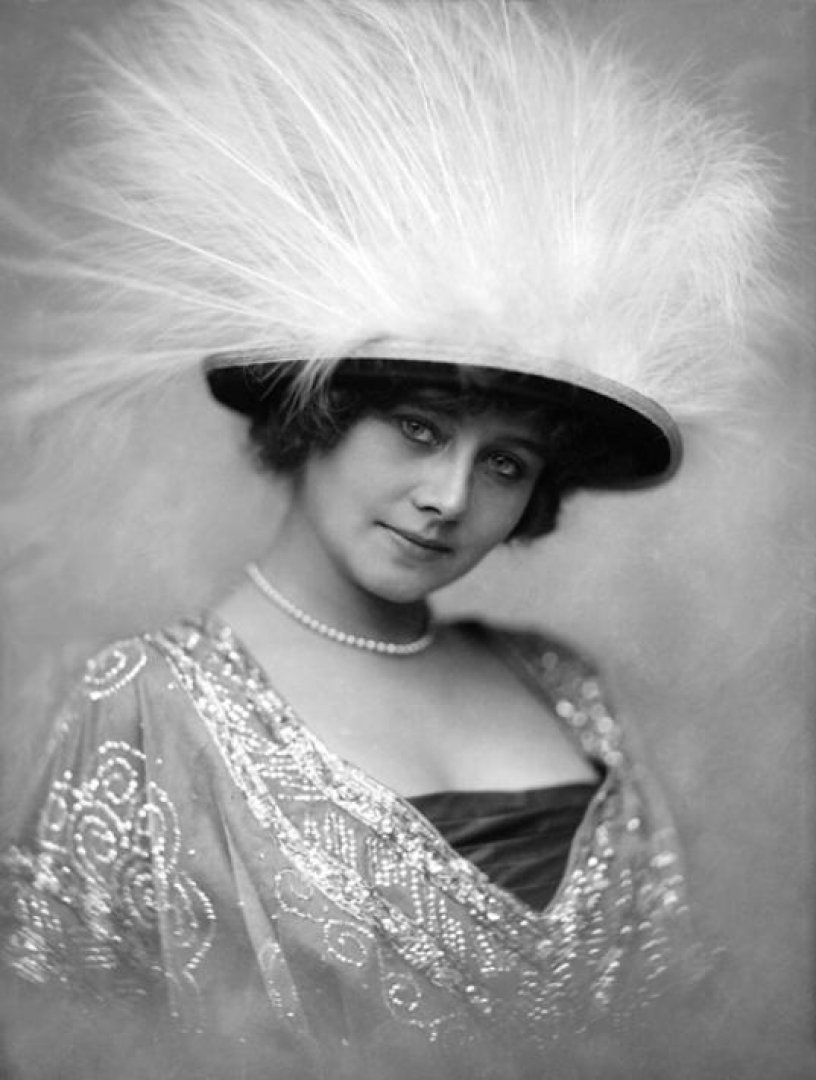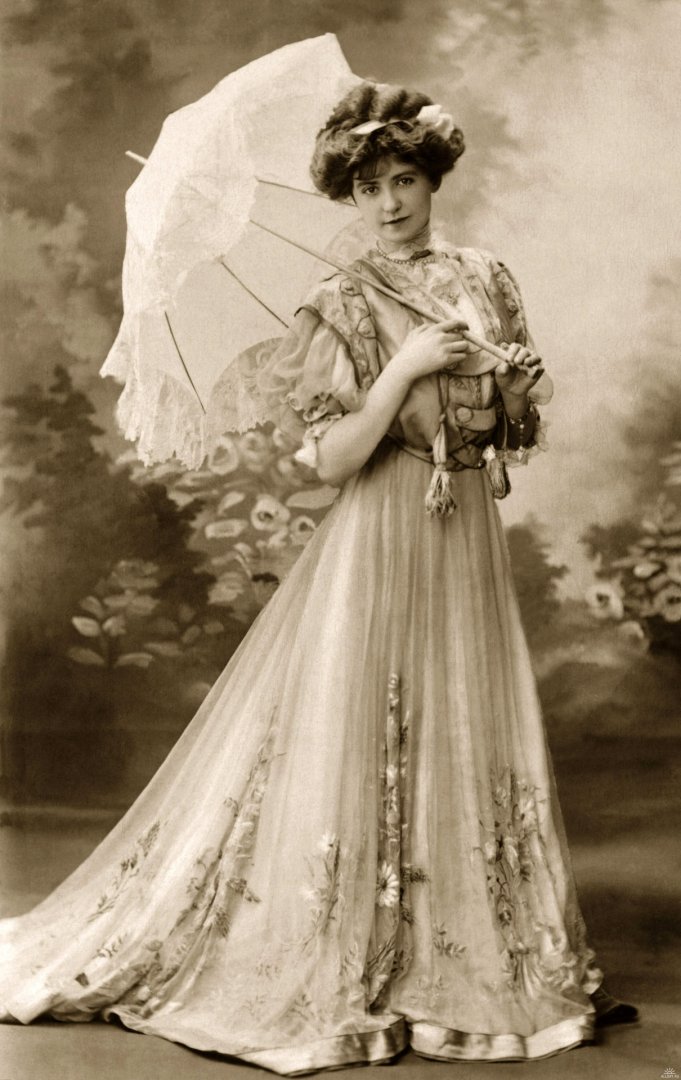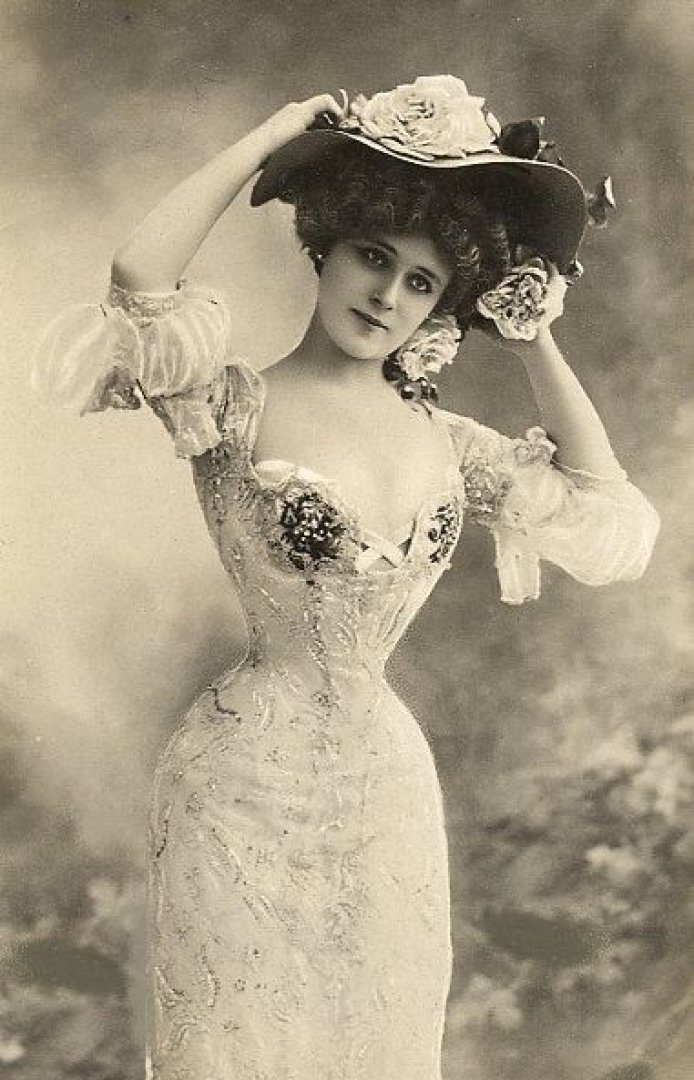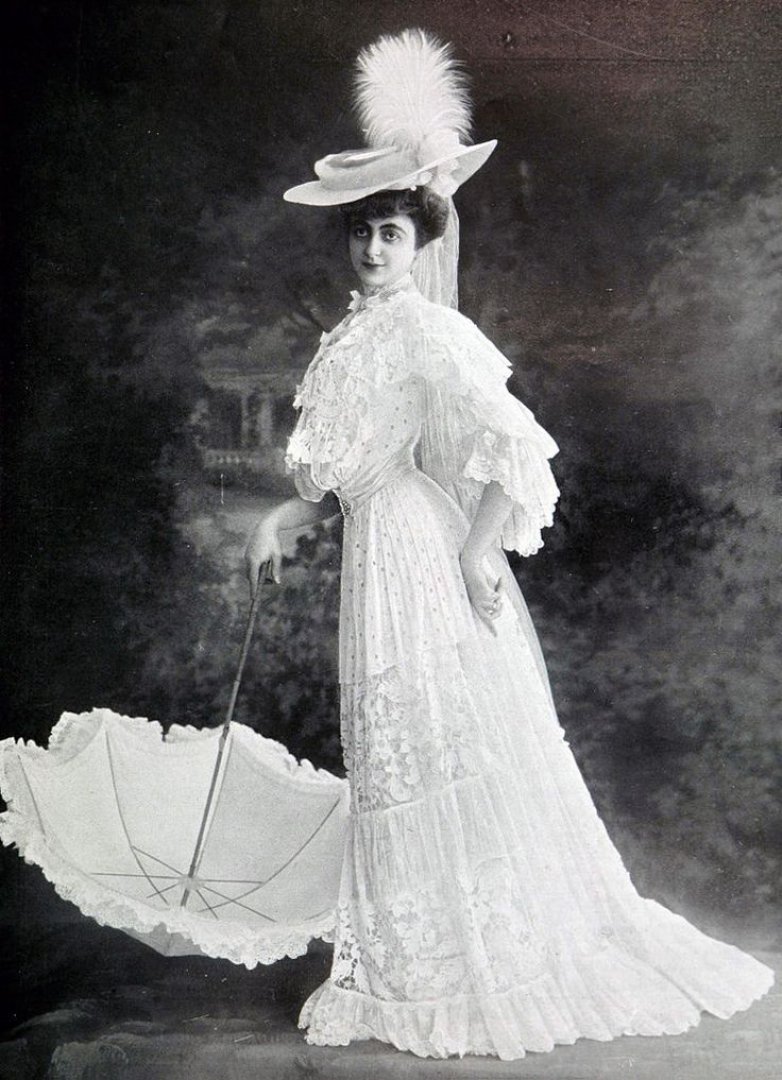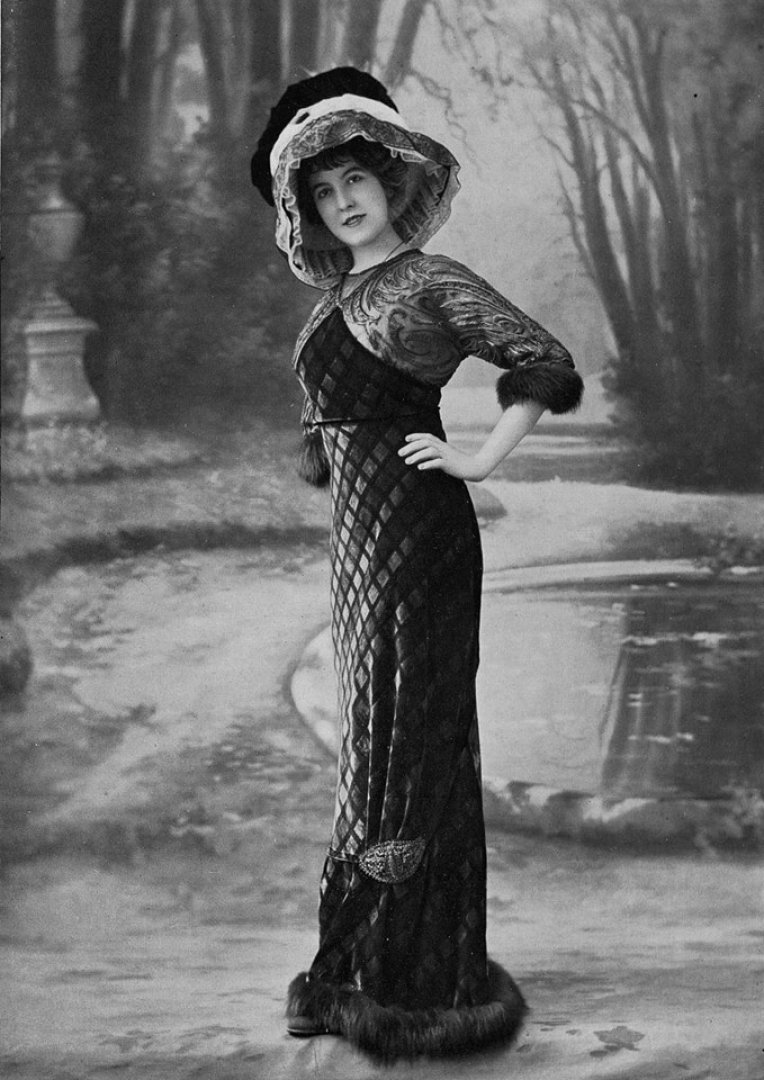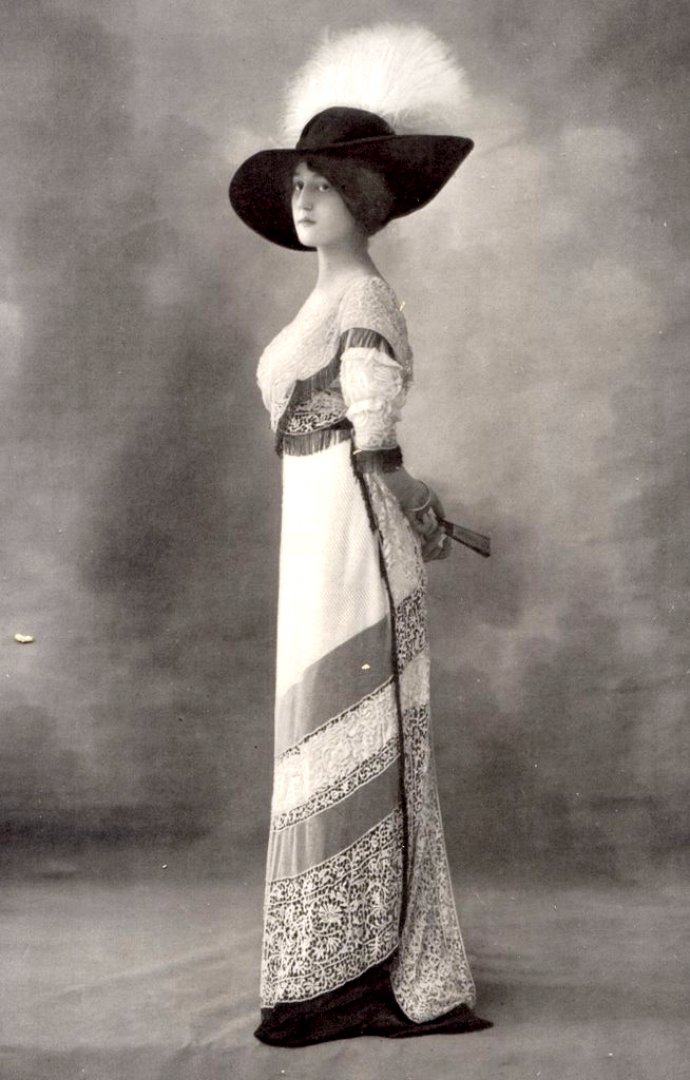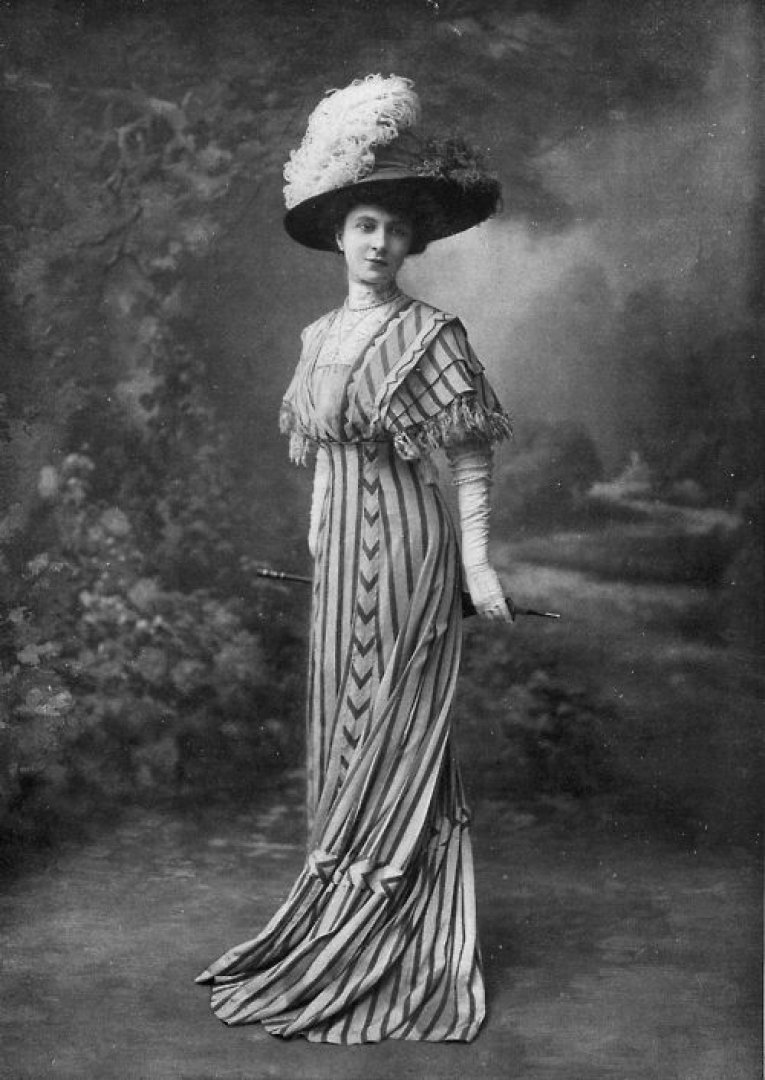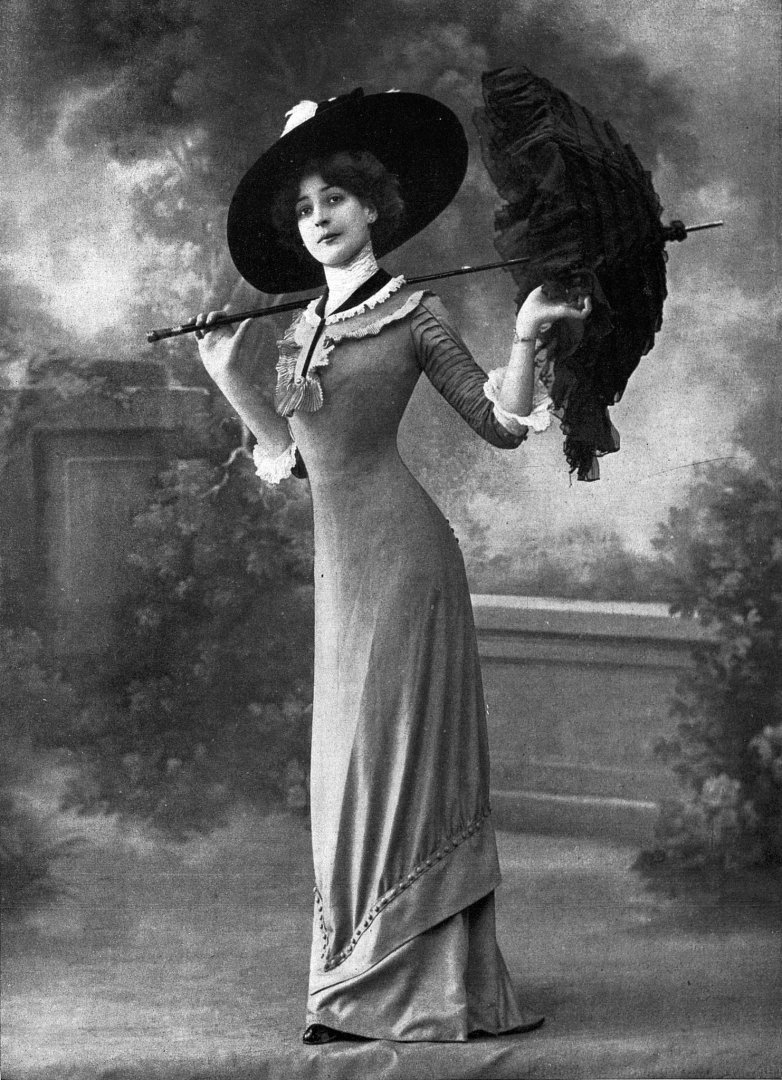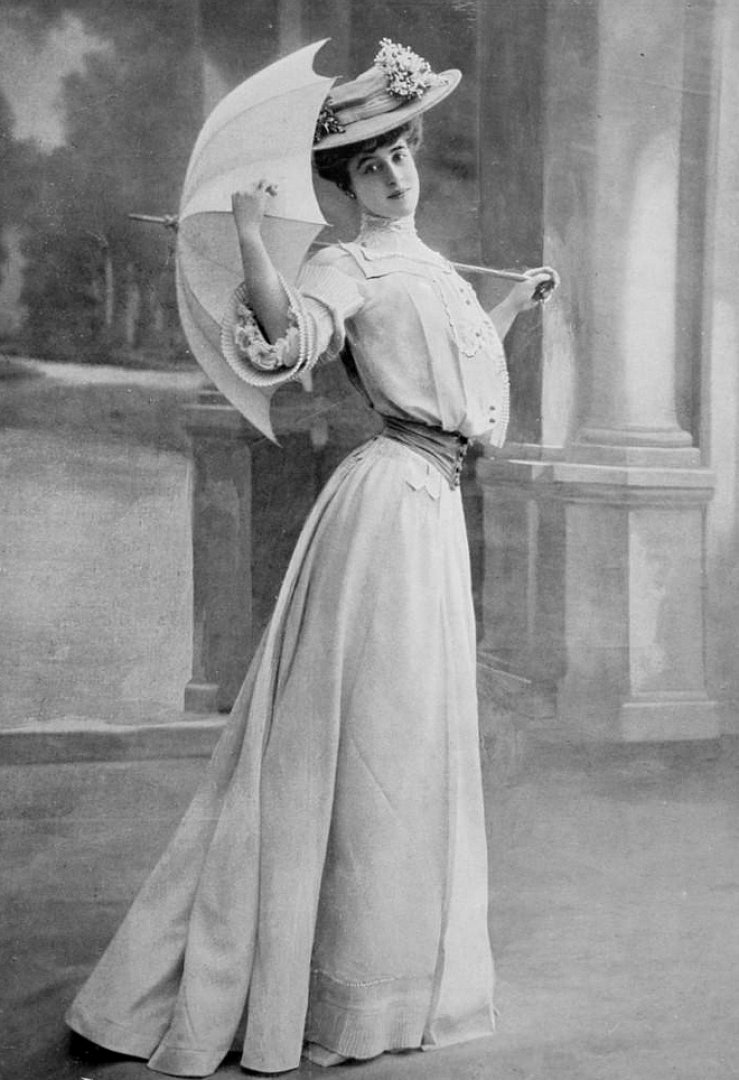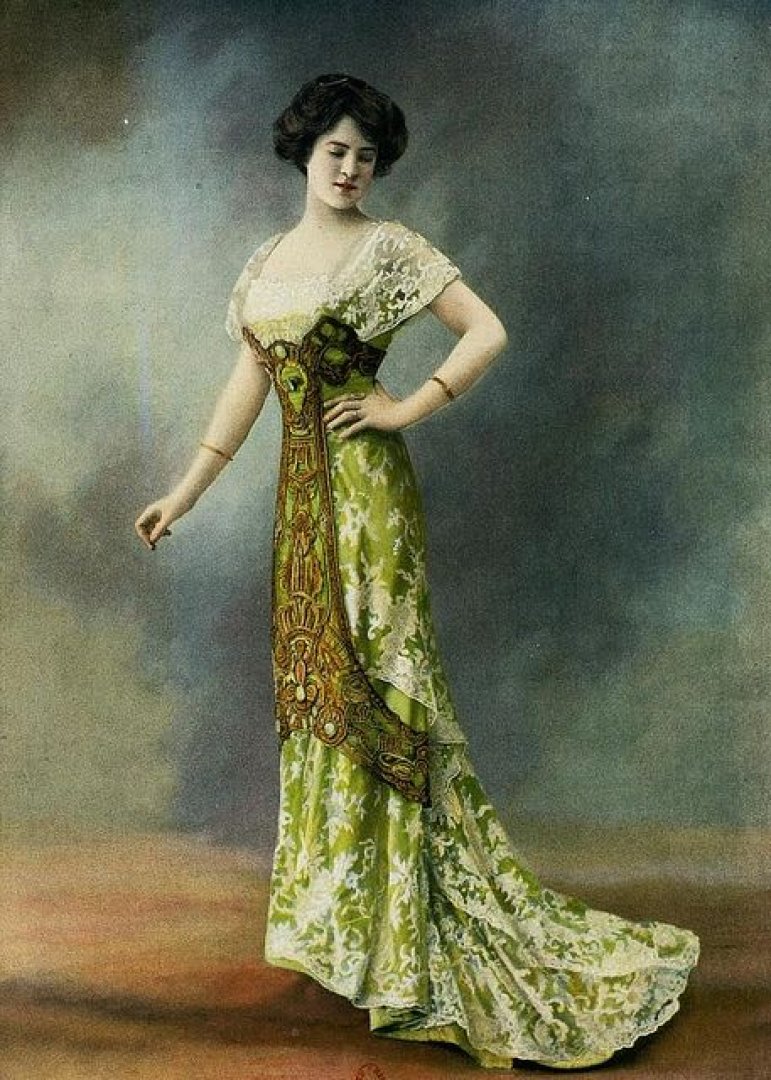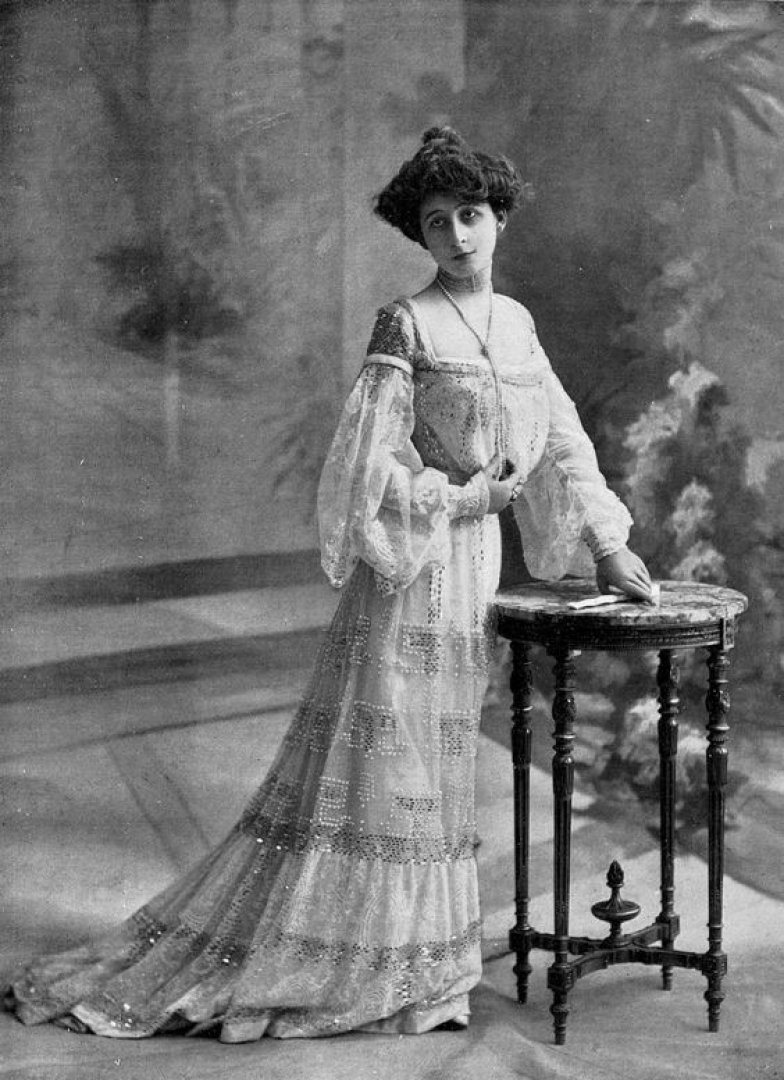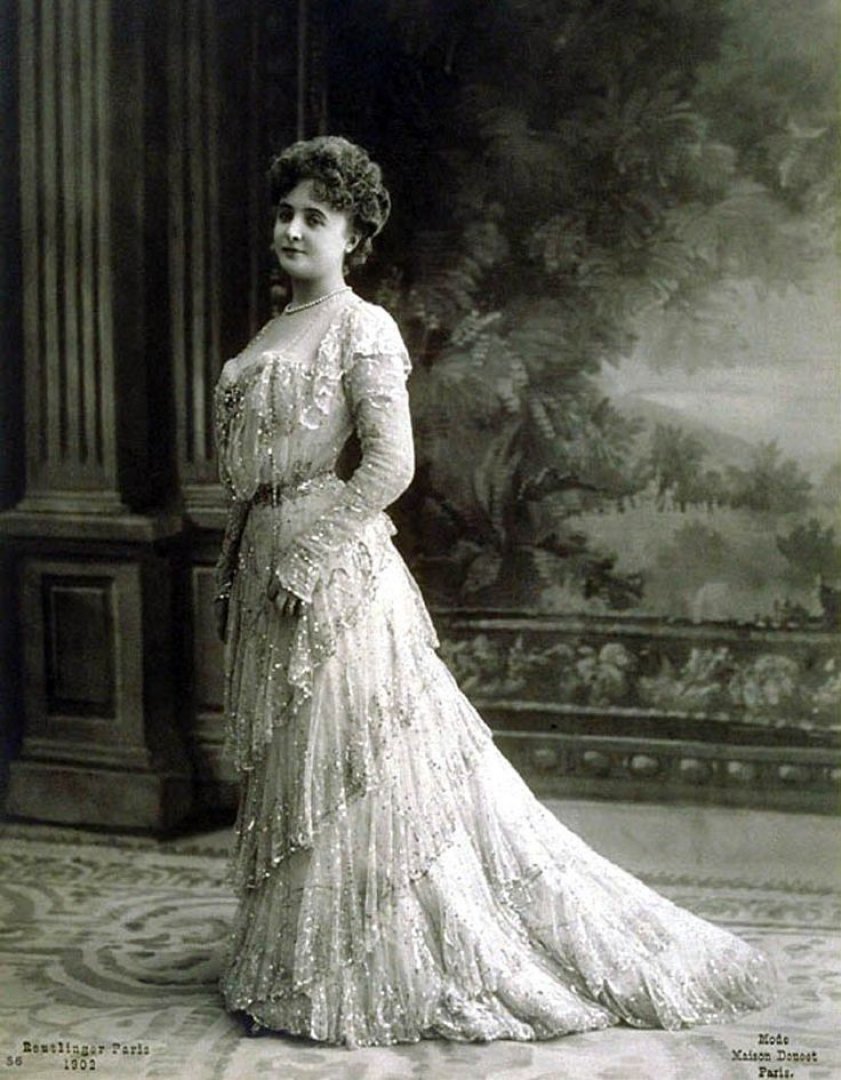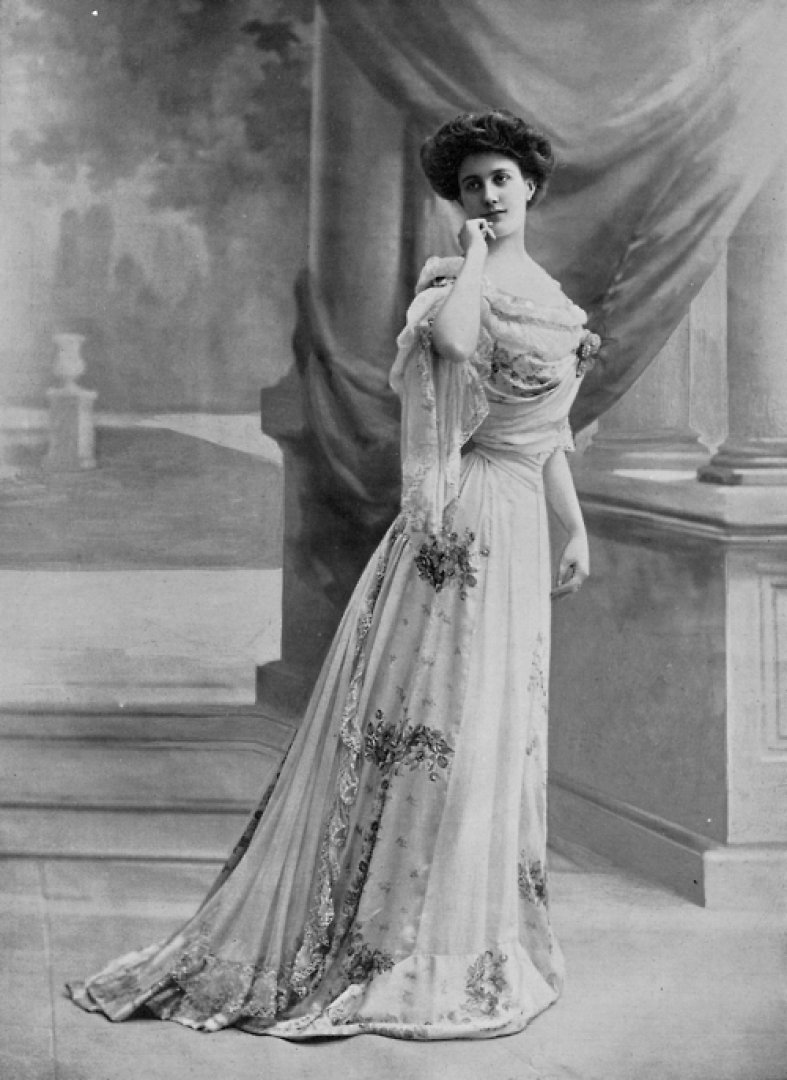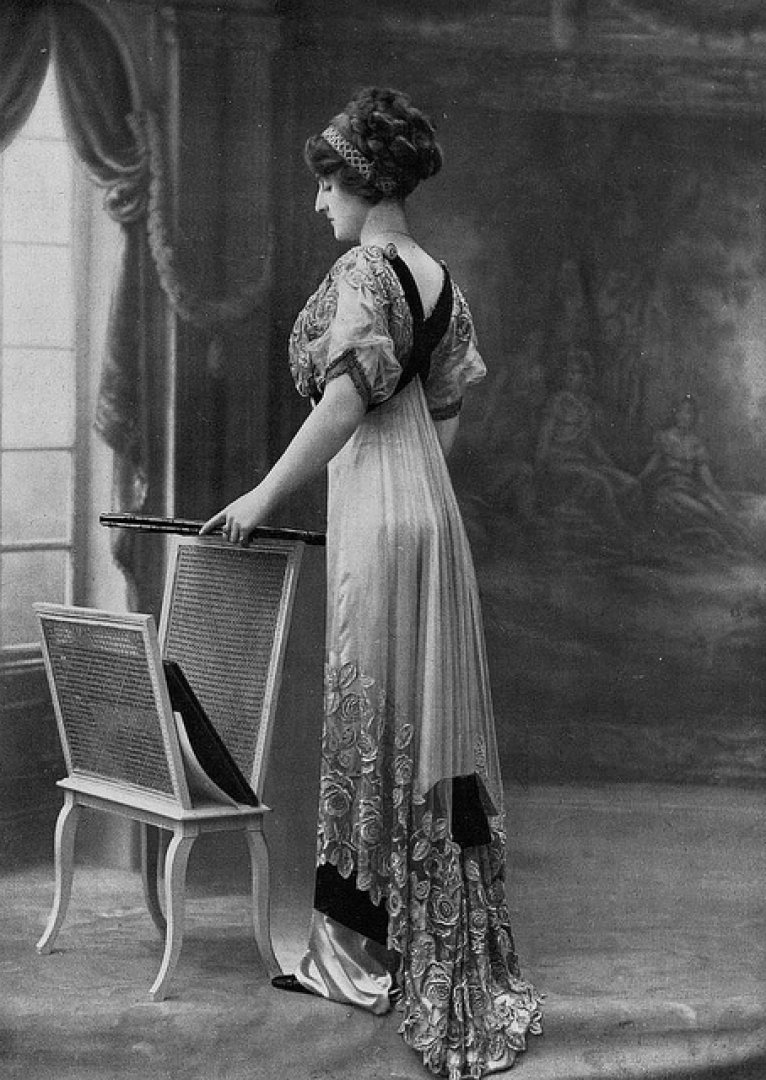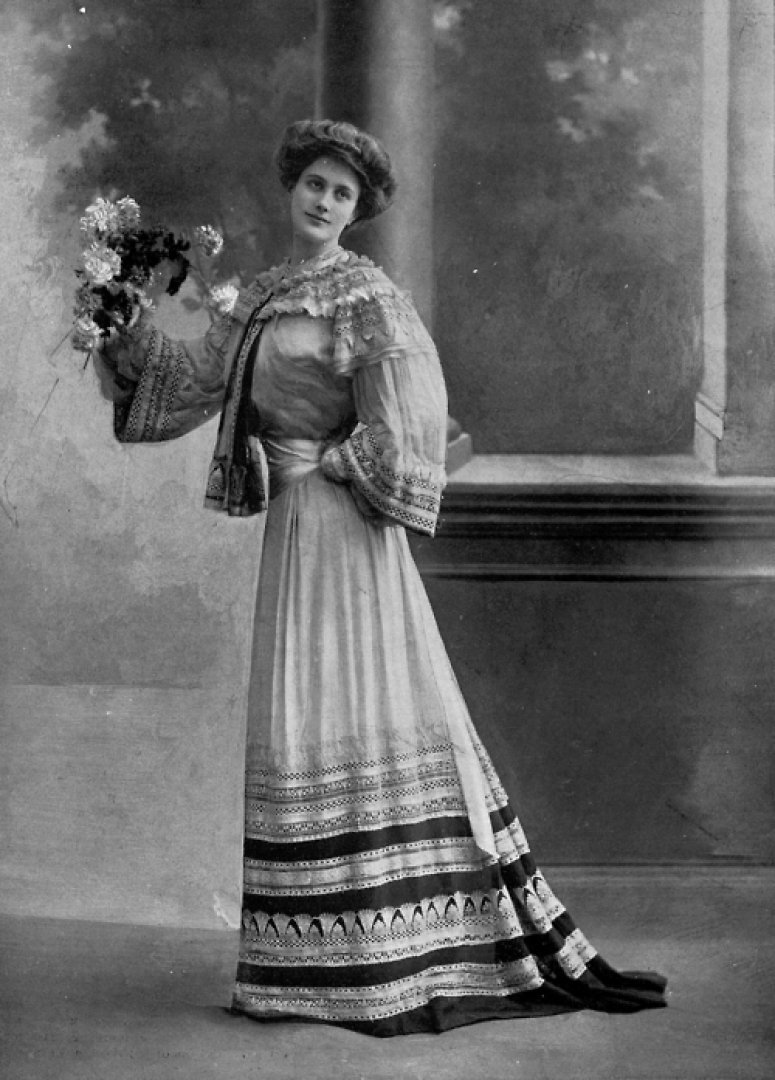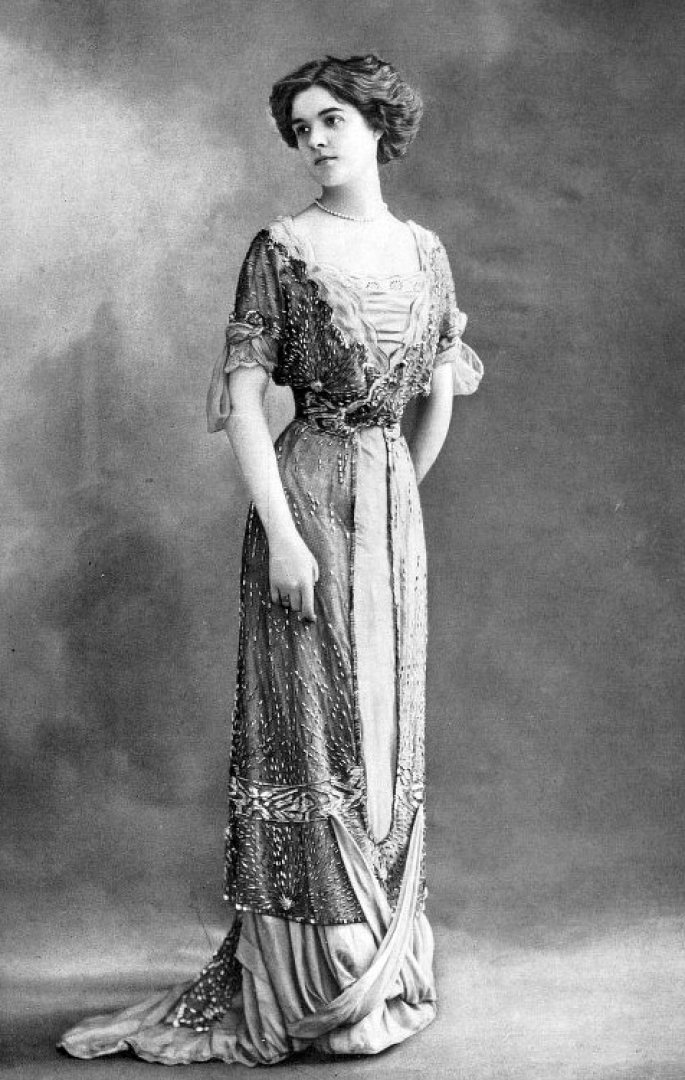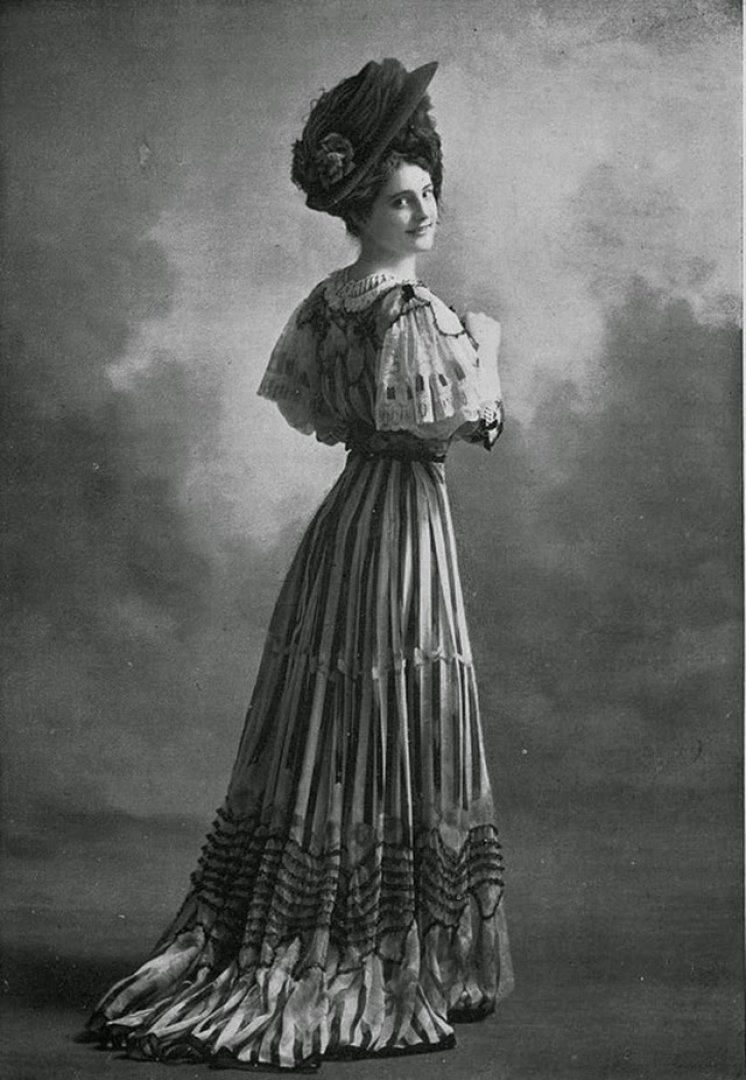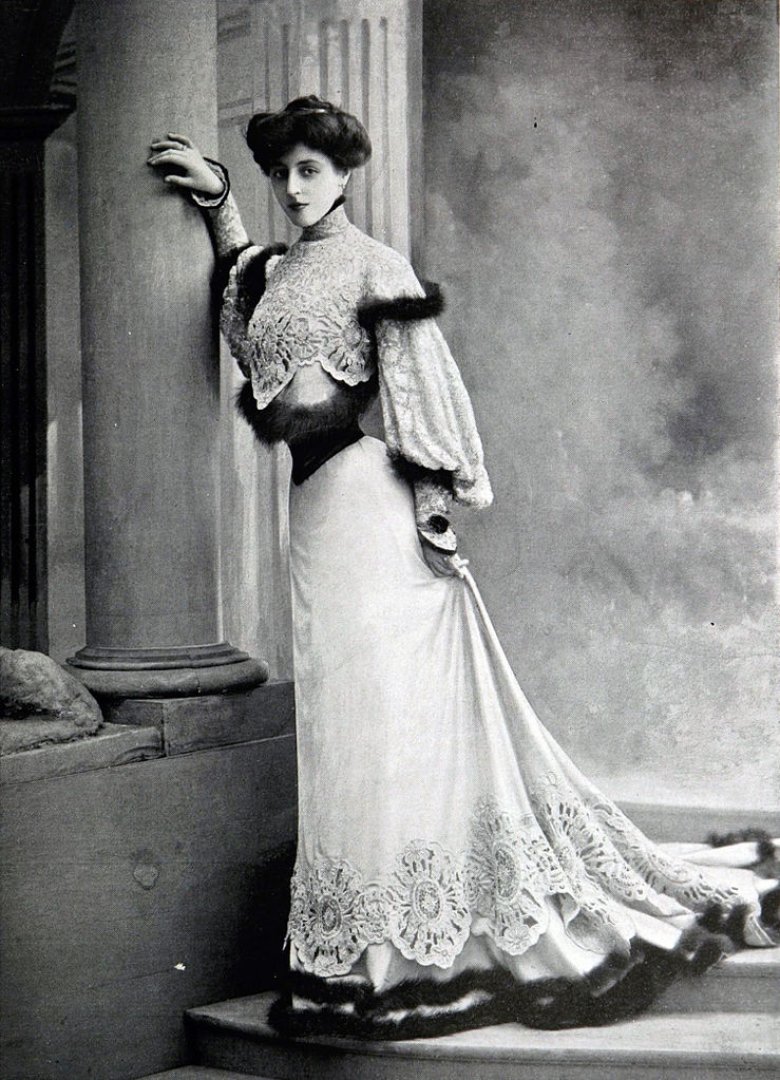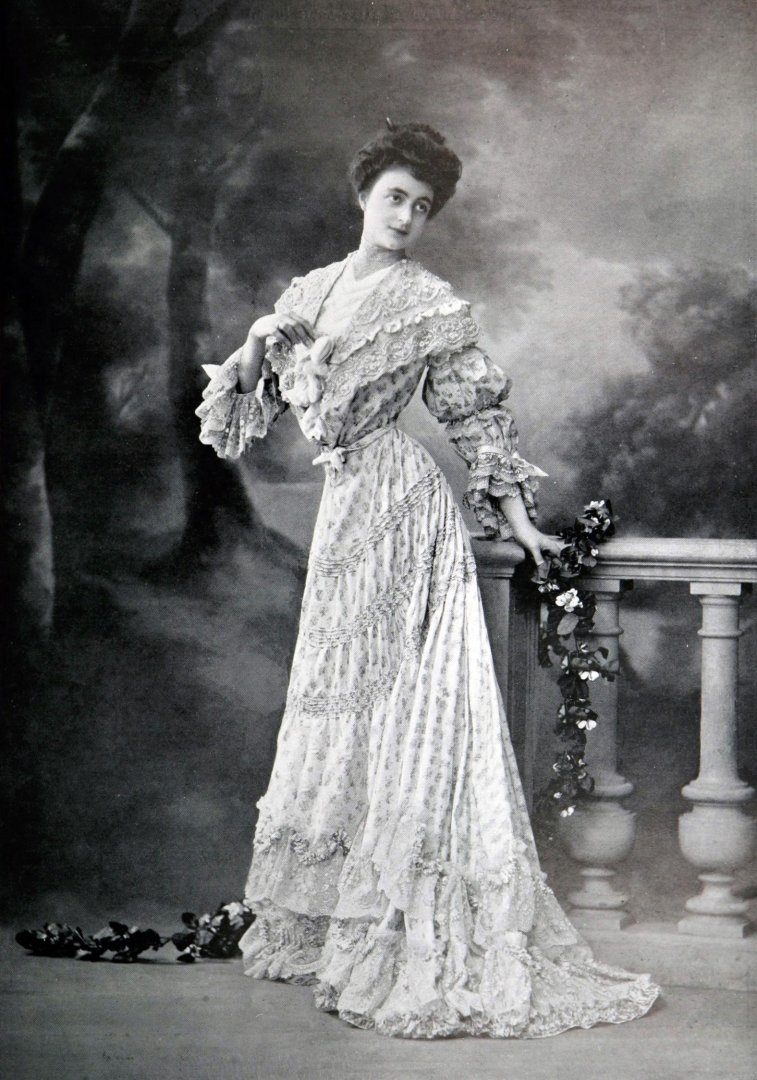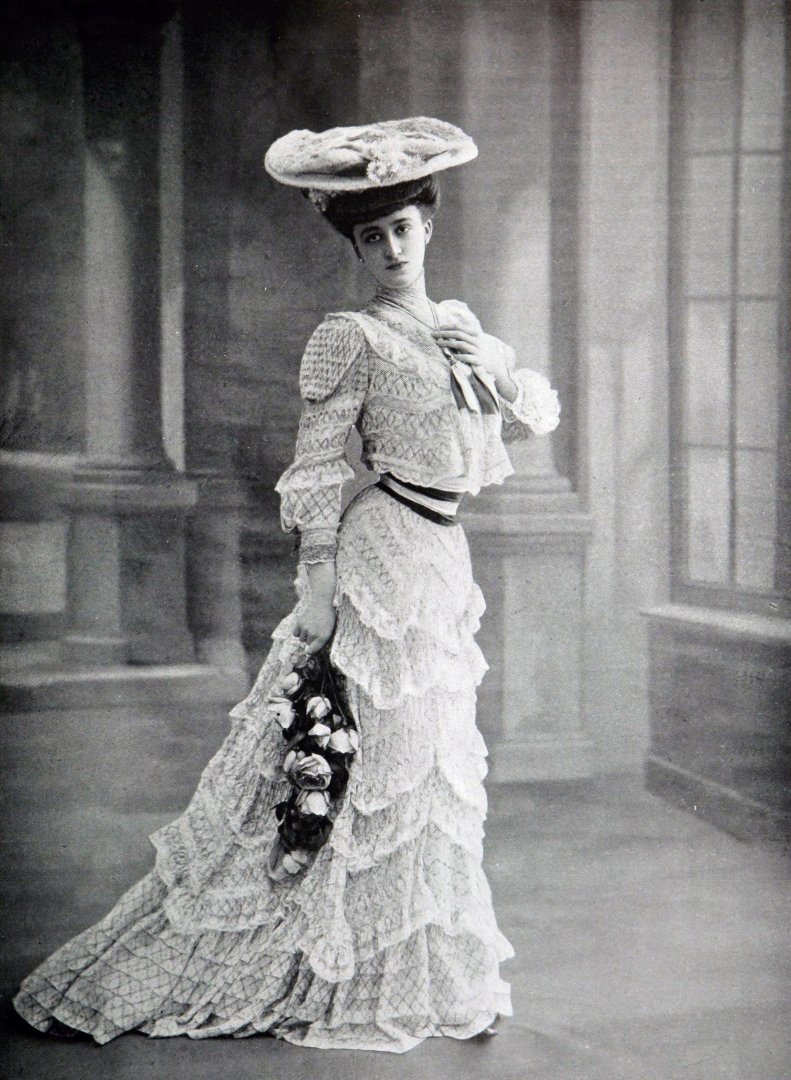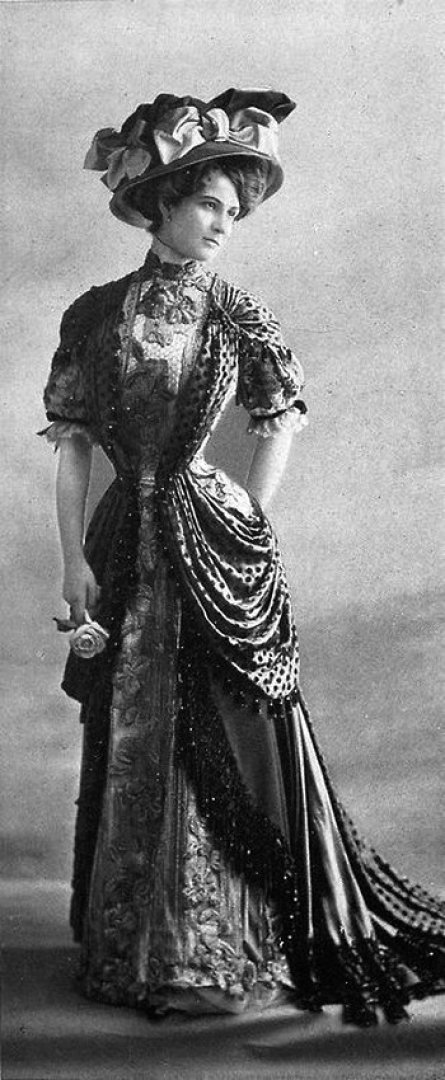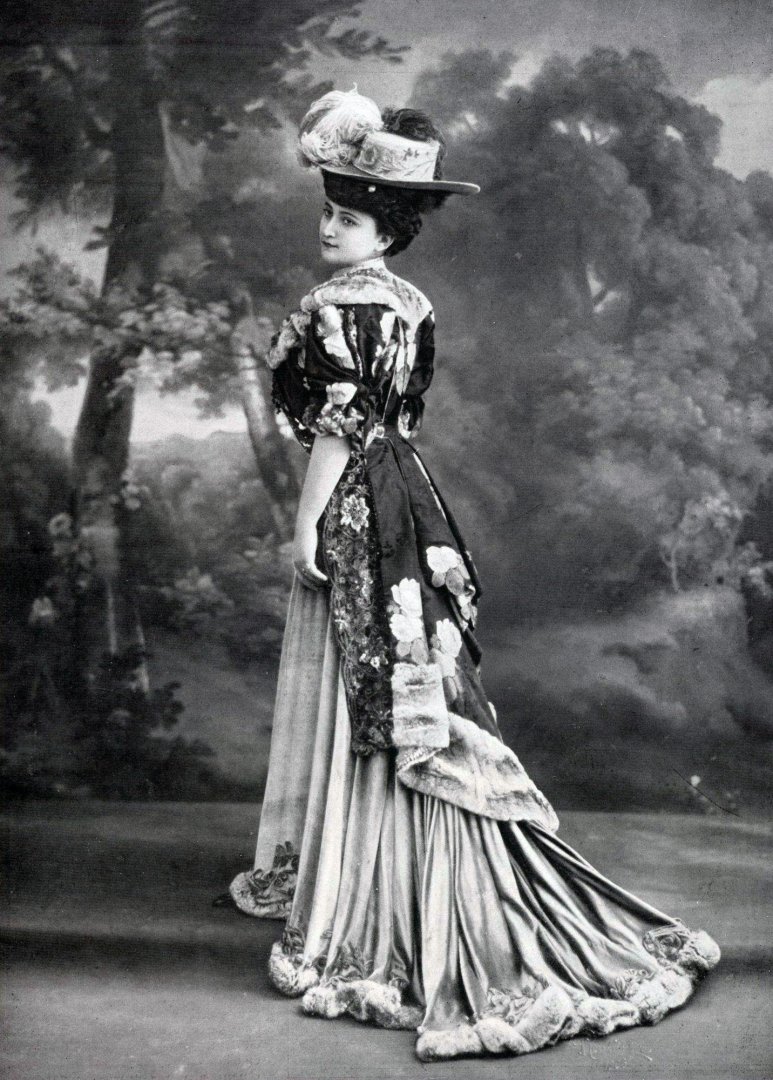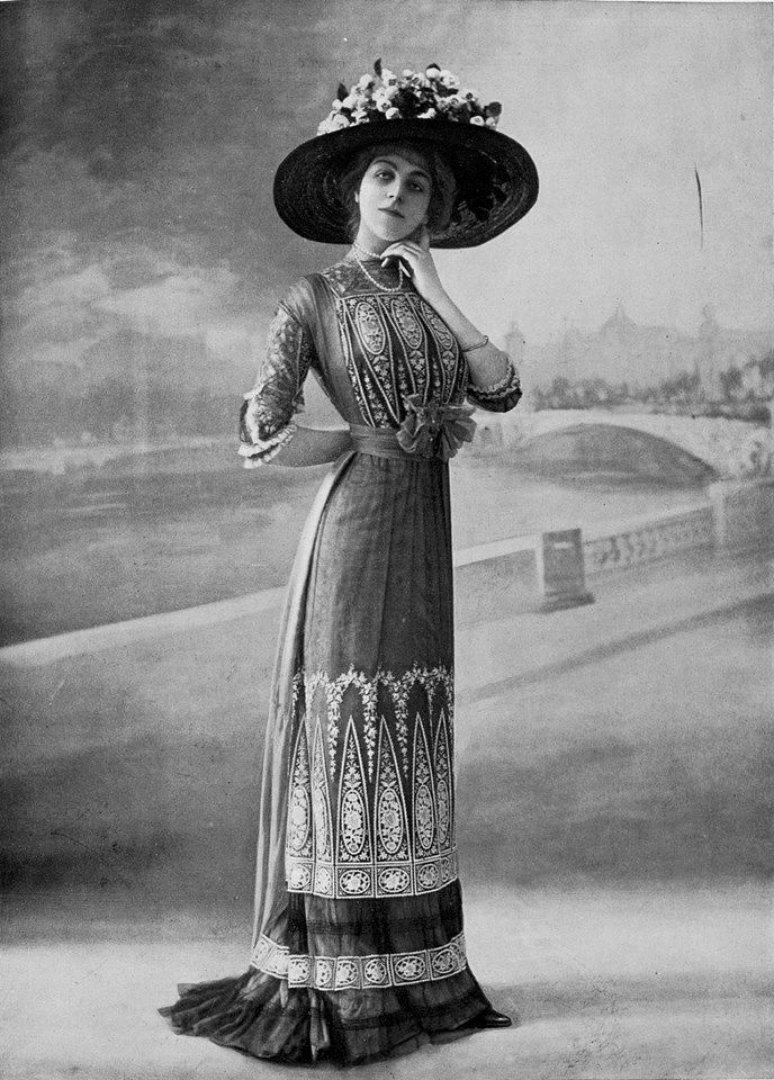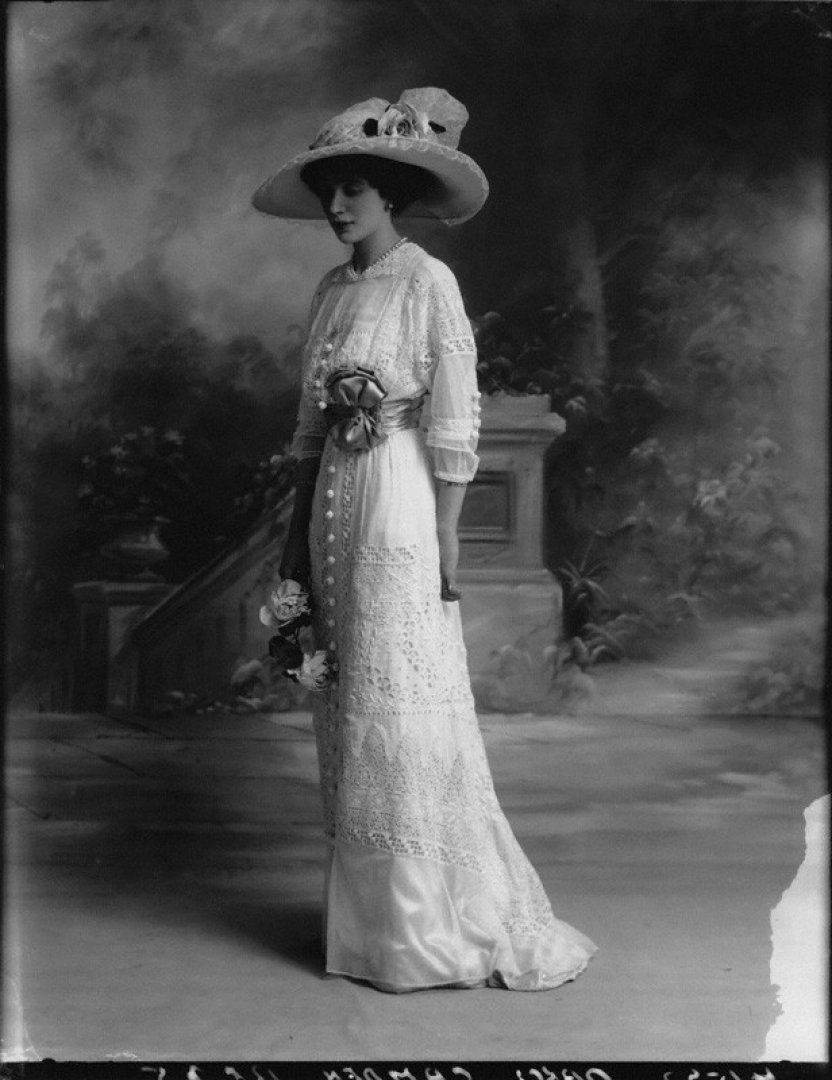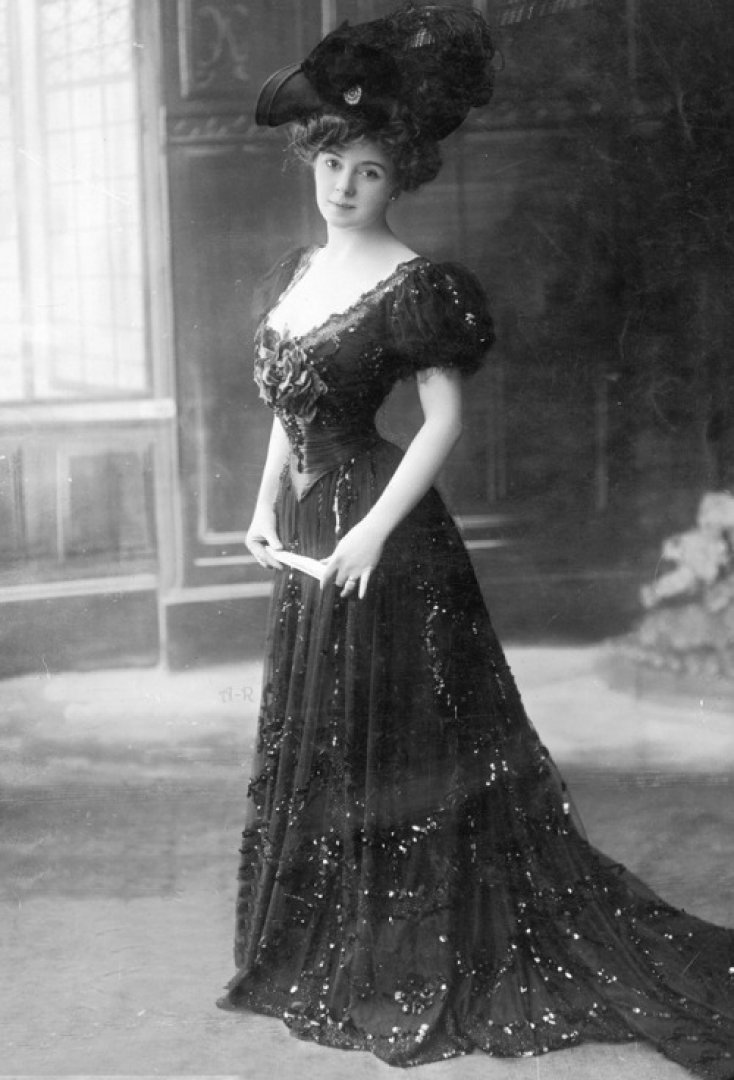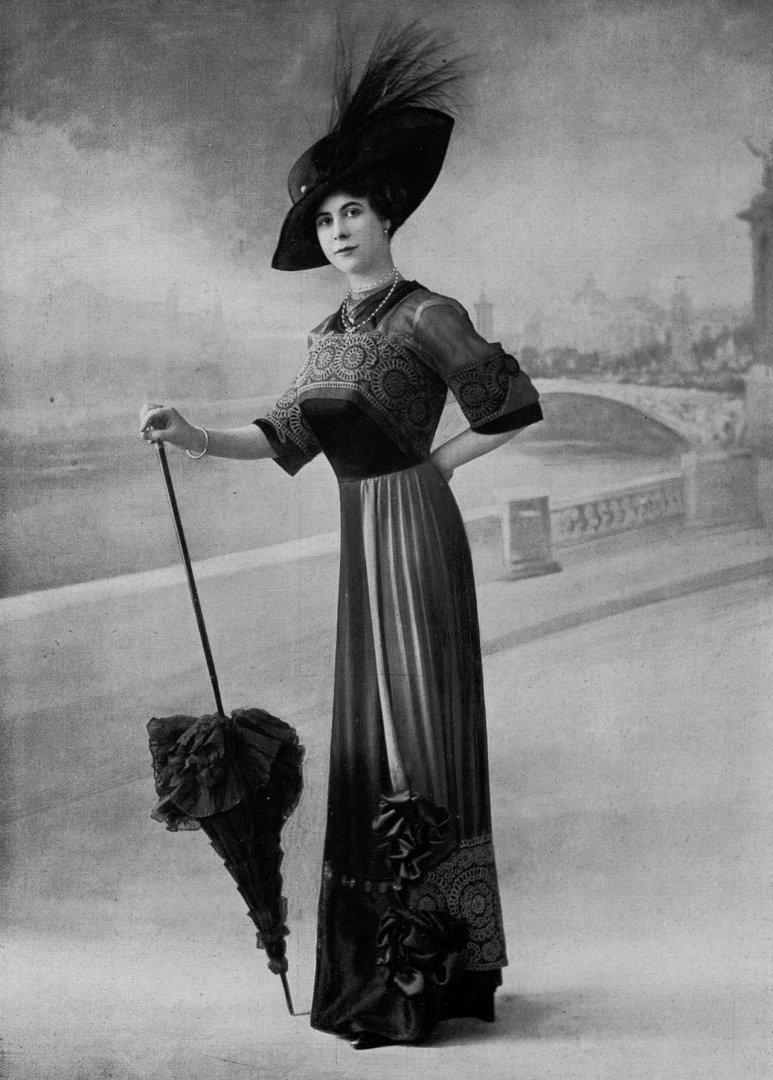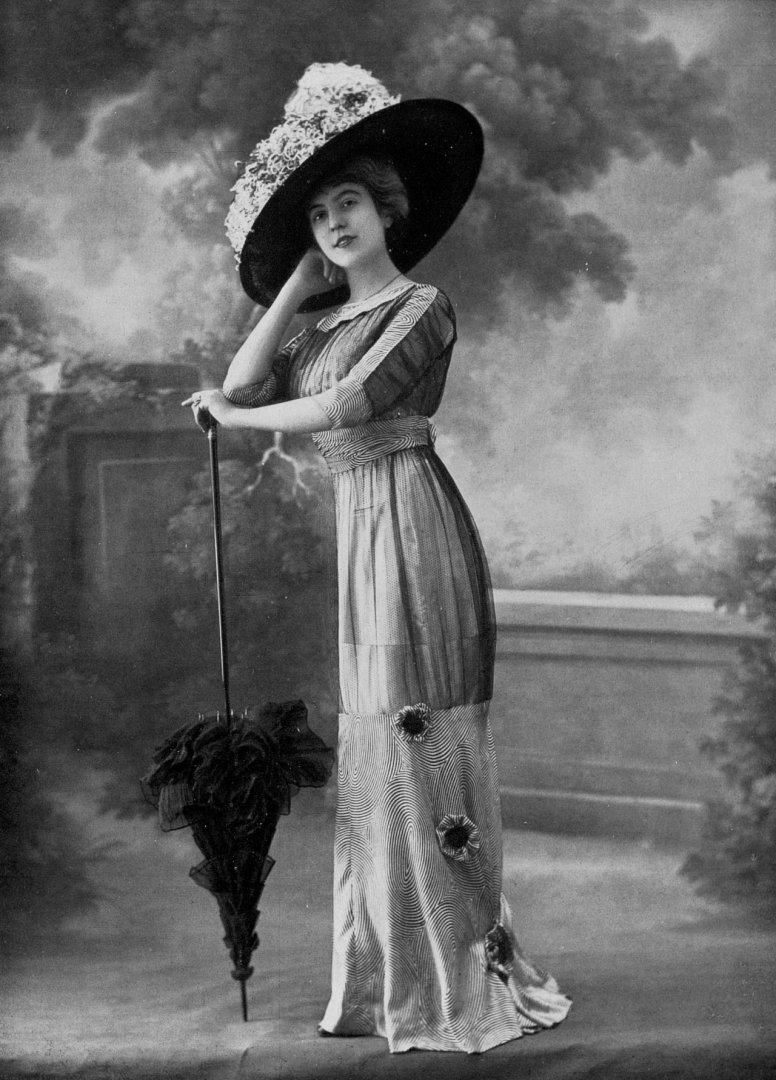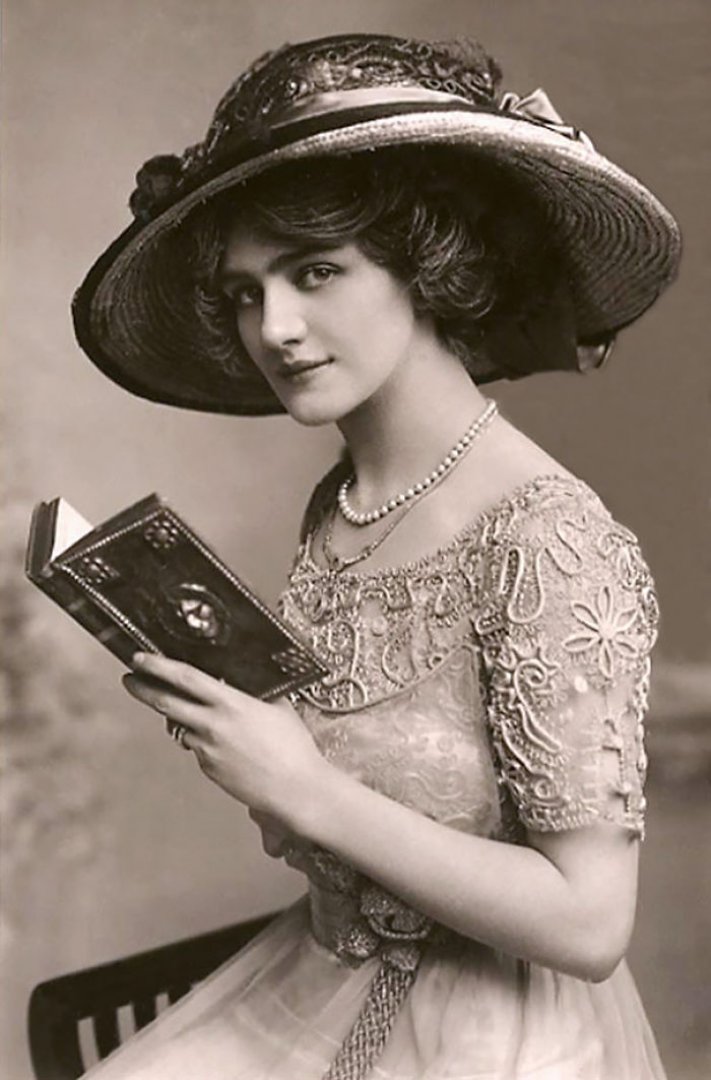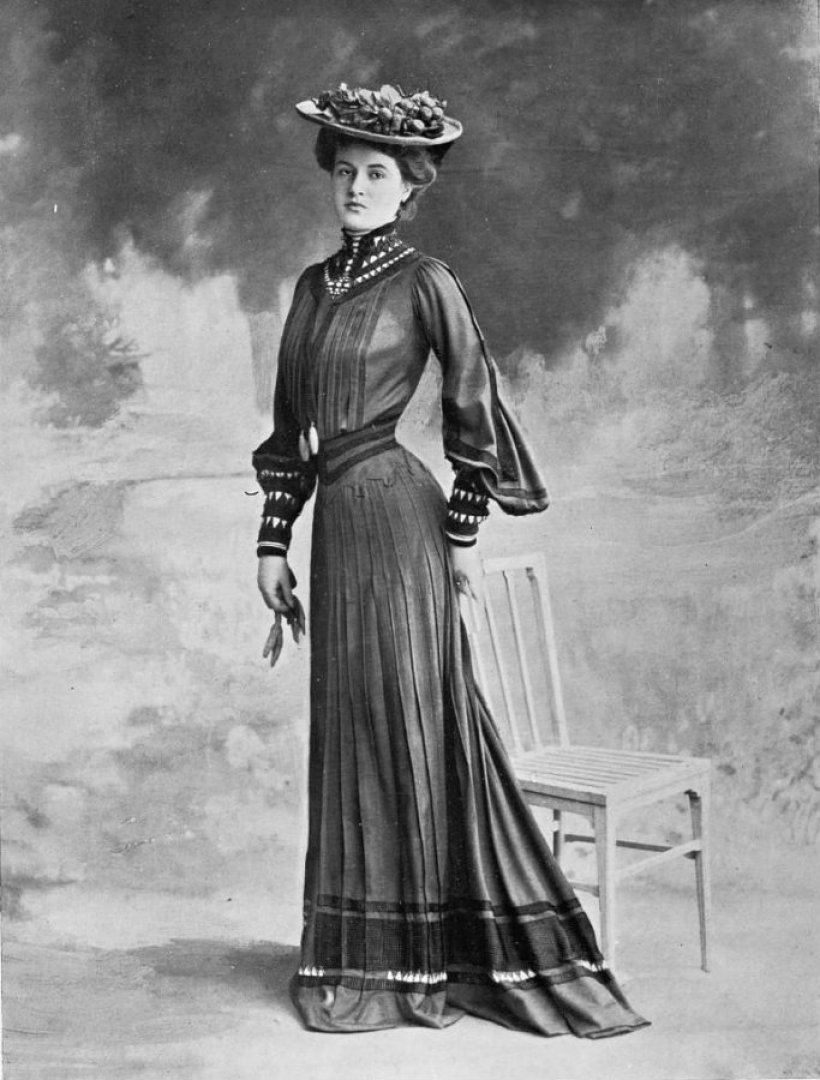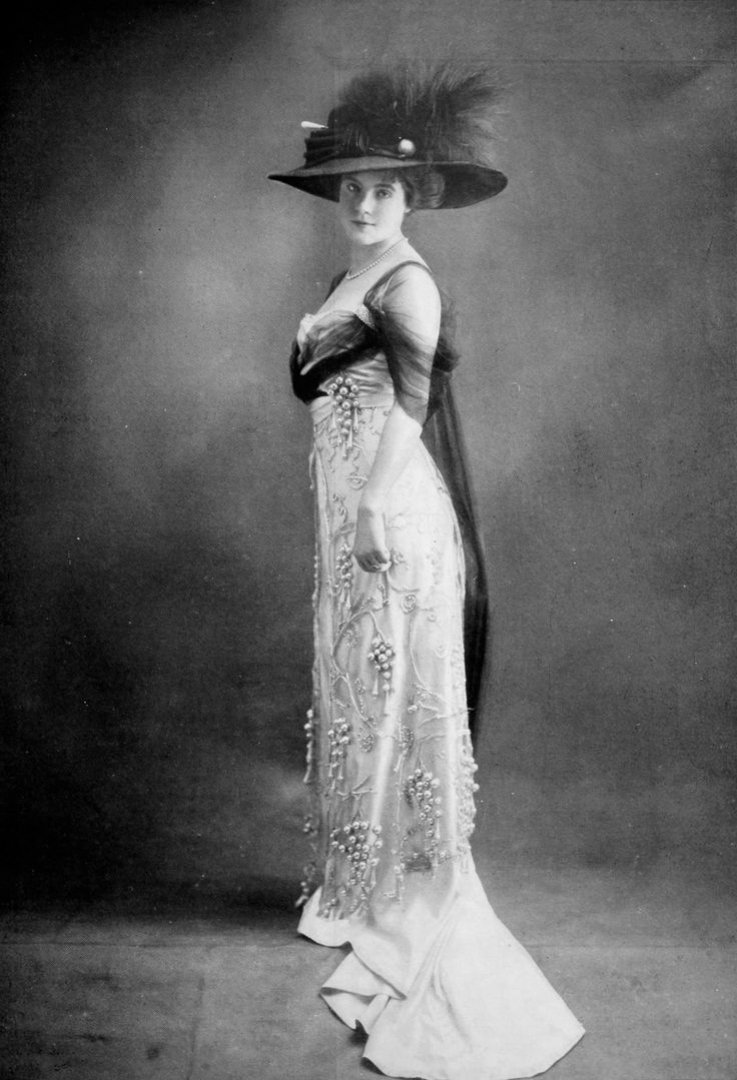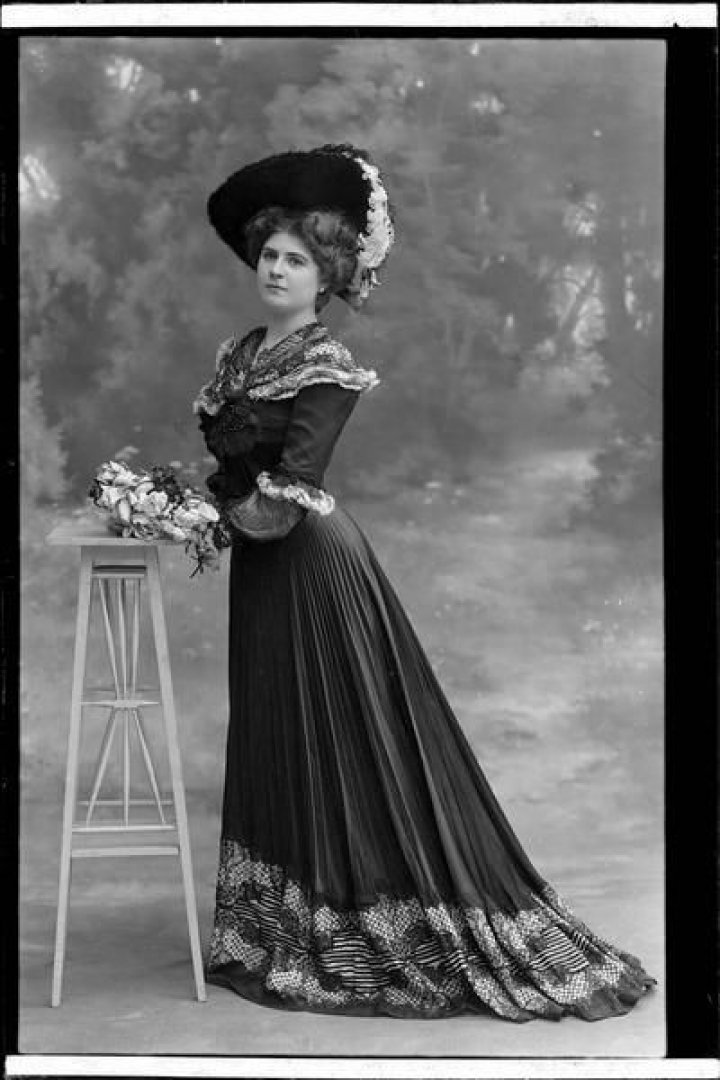Jeanne Paquin, the forgotten seamstress
- Margareth
- Jun 7, 2023
- 6 min read
She was considered as the leading Paris dressmaker and influential in couture business. She was the first major female fashion designer and a true pioneers of the modern fashion business.

I’ve always been enchanted by the way ladies from 1800s used to dress: they were so classy and flawlessly elegant. The high wasted delicate dresses form the early 1800, known as the Empire style, made those dolls appear like a Greek graceful statue. The corset helped to enhance the silhouette (that could hardly go unnoticed) in the second half of the 19th Century with wider skirts embroidered and decorated by hand with the ornaments put on it in the minimum details. Flounces and frills were added to push out the skirt. Clothes were true pieces of art, manufactured for these feminine, slender-shaped, pretty porcelain skin Princesses. Hats, adorned with rich ornaments such as feathers, silk ribbons, birds and flowers ... were an elegant work of art that completed the look.

Paris has been for so many centuries the birthplace of fashion which revolutionized the world of dress in the middle of the 19th Century. Between the end of 1800s and the beginning of the XX Century a few Parisian fashion houses were in competition to dress the so called “crème de la crème” of high society of the time. These were: Maison Doucet, Maison Paquin, MaisonWorth and Maison Laferrière. Among them, Maison Paquinstood out for being the first company to understand both the importance of the brand advertising as well as the search for testimonials who could wear their clothes in public.
Jeanne Paquin (1869 - 1936) was a French fashion stylist, known for her resolutely modern and innovative designs. She was considered as the leading Paris dressmaker and influential in couture business. She was the first major female fashion designer and a true pioneers of the modern fashion business.

Born as Jeanne Marie Charlotte Beckers, she started her career when she was just a teenager, apprenticing in the flourishing couture houses of Maison Rouff (a Paris high-couture house established in 1884), where later she became the head of the atelier.
In 1891, she married Isidore René Jacob, the owner of Paquin Lalanne et Cie, a menswear couture house. As a wedding gift, her husband opened for her a boutique/ atelier, where she could unleash her creativity in designing women clothes. That year her career made a qualitative leap, as she became the first woman to head up a couture house. The Maison de Couture was at 3 Rue de la Paix in Paris, next to the celebrated House of Worth (one of the most renowned high-end dressmakers of Paris). Jeanne was in charge of design, while her husband ran the business. The adventure of the House of Paquin had officially started.


Her evening dresses in pastel colours, inspired by the eighteenth-century, embellished with fur or lace inlays, quickly gave to her a great notoriety. Jeanne Paquin creations had a strong impact on public eye and as a true pioneer businesswoman she was one of the first to quickly understand the importance of marketing and promotion of the brand. By this way, she chose some testimonials who, during public events such as the Opera or the Grand Prix, could wear her designs. The most refined women of high-born society noticed her creation and wanted to find out new models. That’s why Jeanne Paquin did not hesitate to organise some "fashion shows" to promote her new models. She was very keen on forming personal relationships with clients, taking into account their individual personalities and needs.

“Black is poetic. How do you imagine a poet? In a bright yellow jacket? Probably not”
— Ann Demeulemeester


By time, she achieved acceptance in couture and became quite popular. To satisfy the growing demand of her dresses she enlarged the atelier, employing up to 2000 workers during the peak of her success. Paquin was a prestigious house of fashion that dressed everyone V.I.P. of the time: the Queens of Belgium, Portugal, and Spain; famous actresses such as the Belle Époque stars, Liane de Pougy and La Belle Otero. She created pieces of clothes also the wives of American tycoons such as the Astors, Ballantines, Rockfellers, Vanderbilts, and Wannamakers.
With such an upturn on sales and the growing demand for her garments, she decided to open a showroom in London in 1896, with the financial help of some British investors who trusted her business. This became also the headquarter of the House Paquin, though she did not close the Parisian boutique. In 1912, she opened a shop in New York, at 398 Fifth Avenue, and in Buenos Aires and Madrid in 1914. Jeanne Paquin was the first Parisian couturier to gain access to an international market.

Jeanne loved to take inspiration from old Greek/Roman style and from Asian culture too. Among some of her innovative designs, that we owe to her talent, there is the Empire-line dress which she created in 1906, exactly one year before Poiret made his name with this design! Another creation we wrongly award to Paul Poiret is the kimono coat that also she made one year before him. She had a flair for fashion business and was very active in the couture community. These skills made her win some awards and leaderships. Paquin was the first woman to have her own stand at the “Exposition Universelle” of 1900, where she was named President of the Fashion Section. She will also have an amazing stand at the World Fair in Turin in 1911. She received the Order of Leopold II of Belgium in 1910, and the Legion of Honour by France in 1913.




High society women (who could afford such expensive haute couture garments) had their wardrobe filled with any kind of dress suitable for every occasion and it was a normal attitude for them to change two or three dresses during the day (for example one for the first half of the day, one to wear for the afternoon tea and a different dress to wear in the evening etc…). In 1913 Paquin created a day-clothes collection that could also be worn for the evening. Many of her dresses were a clever mix of draping that could meet the needs of the active woman. Her sartorial style suits were cut in order to facilitate the walk. She became also famous for her tango dresses, her lingerie collection and fur.














Both for the day and for the evening, Mme Paquin loved to create elegant and sumptuous gowns. She became famous for her dazzling, shimmering, and glittering gowns, as well as for her gold and silver evening dresses.
Her collection included clothes designed specifically for dancing the tango (which she designed in 1913) and the renowned Oriental-inspired Chimère flapper dress (1925) constructed from delicate chiffon and French silk, and covered with voluminous diamante studs, seed pearls, and gold class beads. The luminosity and movement of this dress stood out when the wearer danced the Charleston. Her shiny black evening coats, made from luxurious silk and velvet, were decorated with metallic embroidery to brighten them. Very popular during the 1920s-1930s, they were truly pieces of art!
Jeanne Paquin also manufactured fancy hats. She was one of the first designers to apply whole bird wings on top of her extravagant hats.
















M.me Paquin was President of the Chambre Syndicale des Couturiers between 1917 and 1919. She retired in 1920, passing responsibility to her assistant Madeleine Wallis. Wallis remained as house designer for Paquin until 1936, the same year that Jeanne Paquin died. Between 1936 and 1946, the Spanish designer Ana de Pombo, Wallis's assistant, was house designer. In 1941, de Pombo left, and her assistant, Antonio del Castillo took over as head designer. In 1945 del Castillo left the House of Paquin to become a designer for the house of Lanvin. He was then succeeded by Colette Massignac, who was tasked with the challenge of keeping Paquin going during the post-War years, when new designers such as Christian Dior were receiving greater publicity and attention. In 1949, the Basque designer Lou Claverie became head designer at Paquin, until 1953, when he was succeeded by a young American designer, Alan Graham. However, Graham's understated designs failed to reinvigorate the brand of Paquin, and the Paris house closed on 1 July 1956.
The House of Paquin and its designer Jeanne will always be remembered by fashion connoisseurs for their contribution in revolutioning and influencing the couture business of their times. Their creations, now well-kept and exposed in the world’s most important galleries, will always be an evidence of that era called Belle Epoque as well as a sign of the unique elegance that characterized women of those bygone days.




